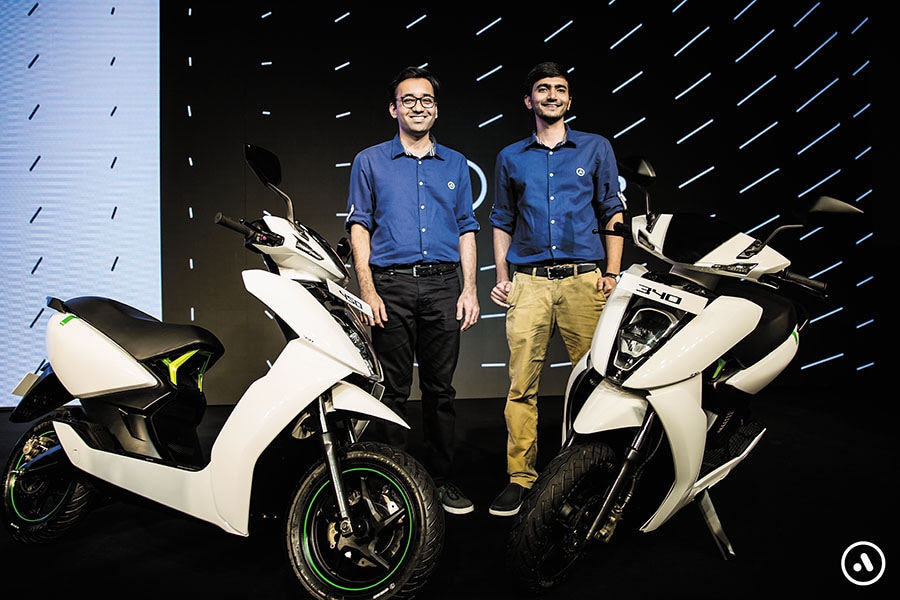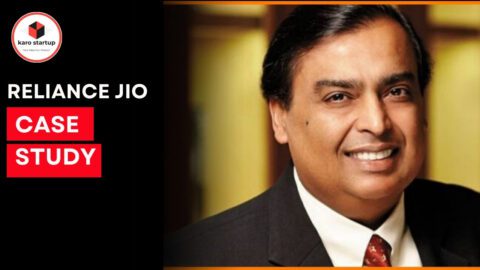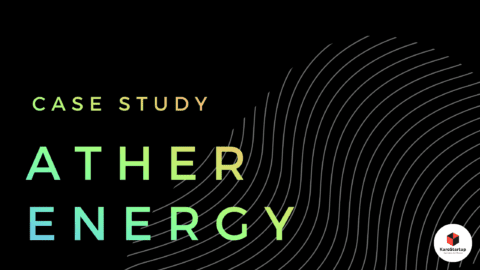Ather Energy Case study
Company Overview
Ather Energy, founded in 2013, is an Indian electric vehicle company that specializes in electric two-wheelers. With innovation at its core, Ather has grown rapidly, offering advanced electric scooters that aim to reshape the transportation landscape in India.
| Company Name | Ather Energy Pvt. Ltd. |
|---|---|
| Founded | 2013 |
| Founders | Tarun Mehta, Swapnil Jain |
| Headquarters | Bengaluru, India |
| Valuation | $1.3 billion (as of August 2024) |
| Latest Funding | $71 million (Series E, August 2024) |
| Main Products | Ather 450X, Ather 450S |
Vision and Mission
Ather Energy’s Vision: To accelerate the transition to sustainable energy by offering electric vehicles that are high-performing, intelligent, and eco-friendly.
Mission: To design and manufacture world-class electric vehicles that empower individuals to contribute to a cleaner, greener planet. Ather strives to provide seamless electric mobility with cutting-edge technology and a robust infrastructure.
Read now : Oodle – How Siddhant Aurora’s Social App is Transforming Friendships
The Founders: Tarun Mehta and Swapnil Jain

Tarun Mehta and Swapnil Jain, both alumni of IIT Madras, are the brains behind Ather Energy. Their journey began with a shared passion for innovation in clean energy and electric vehicles. Tarun Mehta left his job at Ashok Leyland in 2012 to focus on developing better battery packs, which later evolved into the idea of creating an entire electric vehicle from scratch. In 2013, the two founders officially started Ather Energy, with a vision to disrupt the traditional two-wheeler market in India.
Ather’s Unicorn Status
Ather Energy joined the unicorn club in August 2024 after securing $71 million in funding from the National Investment and Infrastructure Fund (NIIF), bringing the company’s valuation to $1.3 billion. This marks a significant achievement in Ather’s growth journey. It took the company 11 years from its founding to reach unicorn status, with key investors such as Hero MotoCorp and Flipkart founders Sachin and Binny Bansal.
Problem Statement
The traditional two-wheeler market in India has long relied on petrol-based vehicles, contributing significantly to air pollution. Ather recognized that the lack of high-performance electric vehicles and charging infrastructure were major roadblocks to widespread EV adoption. Their goal was to solve these problems by creating an electric scooter that performs as well as or better than conventional bikes, while also building a robust charging ecosystem to support it.
Key Challenges:
- High Costs: Competing with traditional vehicles on price.
- Consumer Skepticism: Overcoming the perception that electric scooters are underpowered.
- Infrastructure: Addressing the lack of EV charging stations.
Ather Energy is actively addressing several key problems in the electric vehicle (EV) market with innovative solutions:
1. High Cost of EVs
One of the major hurdles to EV adoption in India has been the high cost compared to traditional petrol vehicles. Ather Energy has tackled this by continuously working on cost reduction through localization of components and scaling up production. The company has achieved over 90% localization in manufacturing, sourcing most of its parts within India, which reduces the costs associated with imports.
In addition, Ather has developed multiple models, such as the Ather 450S, which is priced lower to appeal to a broader audience. This diversification helps attract customers from various income groups, making EVs more affordable.
2. Consumer Skepticism About Performance
Many consumers are skeptical about the performance of electric two-wheelers. Ather’s scooters offer powerful Brushless DC motors that ensure superior acceleration, with the Ather 450X reaching 0-40 km/h in just 3.3 seconds. This is comparable to petrol scooters, proving that performance doesn’t need to be sacrificed in an electric vehicle.
3. Charging Infrastructure
Another significant barrier has been the lack of widespread charging infrastructure. Ather is solving this with its proprietary Ather Grid, a network of fast-charging stations across India. These stations allow users to recharge quickly (up to 80% in 50 minutes), thus addressing concerns about long charging times. Ather Grid is expanding rapidly, making electric mobility more viable in urban areas.
Through these solutions, Ather is positioning itself not just as a maker of electric scooters but as a comprehensive EV ecosystem provider, helping solve fundamental issues in India’s transition to electric mobility.
Products and Services
Ather Energy’s flagship products are the Ather 450X and Ather 450S, known for their advanced features, high performance, and sleek design. The 450X, introduced in 2018, is regarded as one of the best-selling electric scooters in India due to its robust features like a range of 146 km, fast charging capabilities, and smart dashboard for navigation, music, and diagnostics.
| Model | Key Features | Price Range |
|---|---|---|
| Ather 450X | 146 km range, fast charging, smart dashboard | ₹1.3–₹1.7 lakh |
| Ather 450S | 108 km range, affordable alternative | ₹1.1 lakh |
In addition to scooters, Ather provides Ather Grid, a growing network of fast-charging stations across India, helping overcome the infrastructure challenge.
Market Segment and Target Audience
Ather Energy primarily targets urban millennials and young professionals looking for eco-friendly transportation options. Their primary market is Tier 1 cities like Bengaluru, Delhi, and Mumbai, where demand for electric two-wheelers is growing rapidly due to traffic congestion and pollution concerns. Ather’s secondary market includes Tier 2 cities, as the Indian government pushes for broader EV adoption.
Market Size and Growth:
India’s electric two-wheeler market is expected to grow at a CAGR of 40% by 2028, driven by increased demand for cleaner alternatives to petrol vehicles. Ather’s market share is currently 9%, with Ola Electric leading the segment.
Ather’s Unique Selling Proposition (USP)
Ather differentiates itself through its premium technology, innovative design, and customer-centric approach. The key aspects that set Ather apart are:
- Smart Features: Integration of smart dashboards, onboard diagnostics, and OTA updates.
- Performance: With a focus on speed, torque, and range, Ather scooters offer performance on par with petrol scooters.
- Charging Infrastructure: The development of Ather Grid is a game-changer, allowing users to charge their scooters quickly and conveniently.
Competitors
Ather operates in a highly competitive EV space in India, with several notable competitors. Here’s a look at Ather’s top rivals:
| Competitor | Market Share | Flagship Model |
|---|---|---|
| Ola Electric | 41% | Ola S1 Pro |
| TVS Electric | 19% | TVS iQube |
| Bajaj Chetak | 18% | Bajaj Chetak Electric |
| Ather Energy | 12% | Ather 450X |
While Ather has a 12% market share, Ola Electric leads with 41% and continues to dominate due to its large-scale production and competitive pricing.
Conclusion
Ather Energy’s rise to unicorn status marks a significant milestone in India’s growing electric vehicle market. From addressing environmental concerns to offering cutting-edge technology in its scooters, Ather has positioned itself as a premium player in the electric two-wheeler segment. Although competition is fierce, Ather’s focus on product innovation, customer experience, and a strong charging network gives it a clear edge in the market. The company’s ambitious plans for an IPO and further product development ensure that it remains at the forefront of India’s EV revolution.
Ather Energy’s journey offers rich insights for students and entrepreneurs alike, demonstrating the power of innovation, perseverance, and the ability to adapt in a competitive market.
FAQs
- Who founded Ather Energy?
Ather Energy was founded by Tarun Mehta and Swapnil Jain in 2013, both alumni of IIT Madras. - What is Ather’s flagship product?
The Ather 450X is the company’s flagship electric scooter, offering a range of 146 km and smart features like a connected dashboard. - When did Ather achieve unicorn status?
Ather achieved unicorn status in August 2024 after raising $71 million in a Series E funding round. - Who are Ather’s main competitors?
Ather’s primary competitors are Ola Electric, TVS Electric, and Bajaj Auto, with Ola Electric holding the largest market share. - What makes Ather unique in the EV market?
Ather’s premium technology, smart features, and dedicated charging infrastructure set it apart from competitors. - What are Ather’s future plans?
Ather plans to expand its manufacturing capacity, launch new products, and is ready for IPO.




